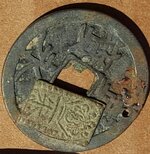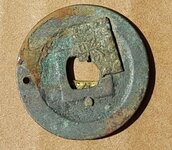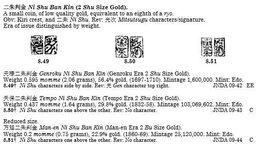winslow
Sr. Member
- Oct 30, 2004
- 423
- 1,457
- 🥇 Banner finds
- 1
- Detector(s) used
- Garrett AT Pro, Garrett AT Max, Equinox 800
I thought this was just another Chinese coin until I got home and cleaned it up. It looks like a coin that someone made into a medallion of some sort. It's drilled so I assume it was worn on a chain at one time. Any ideas what this means? How old? The back doesn't even look like a coin. I'm perplexed but I usually am with Chinese coins anyway! 












